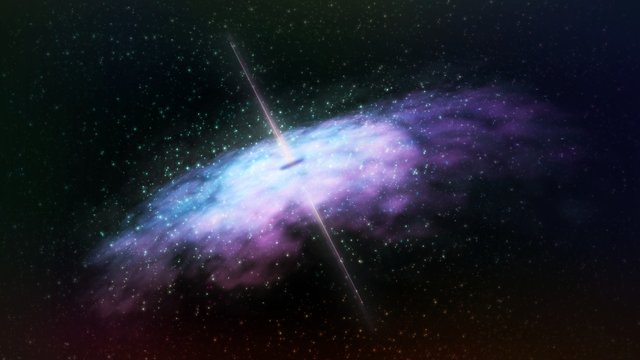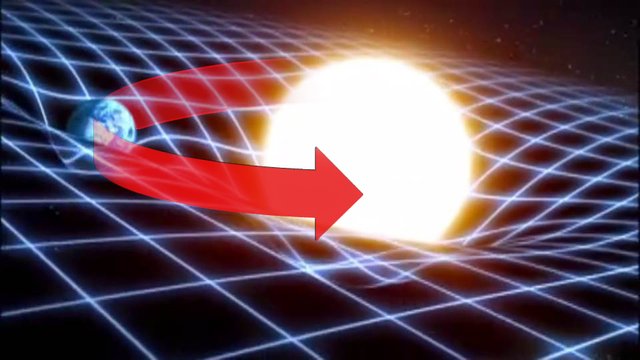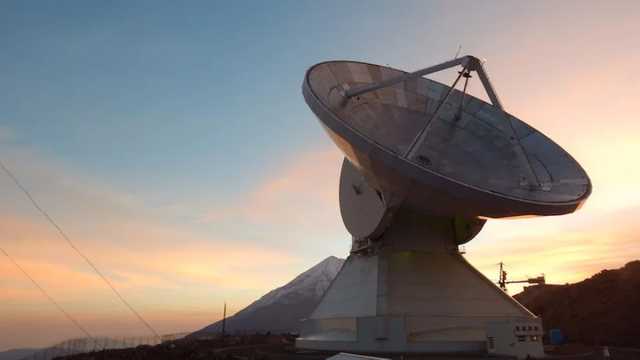For The First Time In History A Black Hole Would Be Seen

The History of Black Hole
Albert Einstein first developed the theory of special relativity in the year 1905. It took another 10 years for him to work out the mathematical model using tenor calculus, a very complex form of mathematics. However, Einstein was not able to arrive at the exact answers to his own equations but was only able to approximate the solutions. These solutions formed the basis of Einstein’s published articles on the theory of general relativity in the year 1915.

This is the simplest set of equation of his tenor calculus. On the left-hand side is the Einstein tensor, a specific divergence free combination of the Ricci tensor and the metric. With 'G' the gravitational constant and 'c' the speed of light.


 Karl Schwarzschild was not discouraged by this challenge. Schwarzschild was one of Einstein's contemporary astronomers and one of the first to recognize the importance of Einstein's published articles. He was more of a practical person. For example, he developed new methods of studying the continuum of colour formation. Therefore, he transcended in his proficiency to deal with theoretical concepts.
Karl Schwarzschild was not discouraged by this challenge. Schwarzschild was one of Einstein's contemporary astronomers and one of the first to recognize the importance of Einstein's published articles. He was more of a practical person. For example, he developed new methods of studying the continuum of colour formation. Therefore, he transcended in his proficiency to deal with theoretical concepts.
Schwarzschild was captivated by the extreme importance of Einstein’s general relativity and thus embarked on a quest to find the exact answers for its equations. After contracting a terminal disease while serving in the German army he was sent home to recover his health. During this time, he was finally able to give the completion of his calculations undivided attention. In 1916, he presented his solutions to Einstein's unfinished equations and it was published later the same year. Titled On the Field of Gravity of a Point Mass in the Theory of Einstein, this is one of the anchors of modern relativistic studies.
Albert Einstein found a new way to describe gravity when he wrote his general theory of relativity. He asserted that gravity was not a force, as Sir Isaac Newton had stipulated, but a consequence of a distortion in space and time, conceived together in his theory as space-time.
Einstein also asserted that matter and energy exist on a background of space and time. And the background of space were conceived in three spatial dimensions; backwards-forwards, left-right and up-down, while time dimension flowed at one second per second.Objects can distort the fabric of space-time based on their mass, therefore, objects with greater mass have a greater effect on the fabric of space-time.
Let me try to explain this in simple terms. Let’s say for instance, a massive ball having a diameter of 3 feet and weighs 80kg is placed in the center of a trampoline. The ball would press down into the fabric, thus causing it to dimple or sag. In like manner, planets and stars warp the fabric of space-time, this phenomenon is known as the geodetic effect. Therefore, if a marble is rolled around the edge of the trampoline, it would spiral inward toward the massive 80kg ball. This pull is similar to the way the gravity of a planet pull rocks in space.

Hence, according to Einstein's general relativity theory, the planets that are orbiting the Sun are not being pulled by the gravitational force of the Sun; they are only following the curved space-time dimple or sag that is caused by the Sun. Therefore, you may say if this is true, why haven't the planets fallen into the Sun? Good question! The reason why planets never fall into the Sun is because of the speed at which they are traveling. An astrophysicist and Professor named John Archibald Wheeler, who helped invent the theory of nuclear fission and who also coined the name Black Hole, said aphoristically that:
Matter tells Space-Time how to curve, and Space-Time tells matter how to move.
Schwarzschild observed that the mass and radius of an object determined the escape velocity from it's surface. For instance, the Earth has an escape velocity of about 11.2 kilometers per second, therefore, for a rocket to depart from the Earth, it must first attain this speed. The Moon however, has an escape velocity of only 2.4 kilometers per second because the Moon is four times smaller than our planet and possesses only slightly more than 1% of its mass.
Consequently, when the radius of a given mass can be made so small and infinitesimal that the escape velocity will increase until it reaches the speed of light, or 300 thousand kilometres (186 thousand miles) per second. At this point, there is absolutely nothing that can escape from the object's surface, neither matter nor radiation. In addition to that, atomic or subatomic forces would not be able to hold the object up against its own weight. The object thereby collapsing into an infinitesimal points — the initial object disappears from sight and only its gravitational force remains to mark its presence. And thus, creating a bottomless pit in the fabric of space-time.
Furthermore, objects with zero-volume but retains all of its mass (pull) are called a singularity. A singularity as explained by Schwarzschild, forever traps anything that ventured inside it because it's surrounded by a spherical gravitational boundary. This spherical gravitational boundary is called an event horizon. The Schwarzschild radius is a formula used to calculate the size of an event horizon and mark the edge of a bottomless pit in space-time.
For about 50 years, many scientist did not grasp the significance of these studies. The idea of a singularity was perplexing to many scientists, even Albert Einstein himself. At the time, the conditions that would create a singularity was beyond the imaginations of leading thinkers.
Professor Wheeler, the coiner of the words "black hole," at first resisted the theory of a singularity in 1958.
How could physics lead to a violation of itself — to no physics?
In 1999, he wrote in his autobiography that:
The black hole teaches us that space can be crumpled like a piece of paper into an infinitesimal dot, that time can be extinguished like a blown-out flame, and that the laws of physics that we regard as ‘sacred,’ as immutable, are anything but...
Like assuming that there is a vacant house somewhere in the world, when in actuality there is a vacant house in your neighbourhood, closer to you than you had assumed. Over the past decades Researchers have come to a realisation that most galaxies have at least one black hole at the central regions. But these black holes are not the stellar variety with three to ten times the mass of our Sun as proposed by Schwarzschild. Rather, their sizes engulf beyond our imaginations; for they possess millions, even billions of solar masses. Even the Milky Way, our very home galaxy has a four million solar mass black hole located at its center, which is about 27 thousand light years away from Earth. Galactically speaking, we have a black hole in our own backyard! Lol.
The First Look At A Black Hole
In recent times, astrophysicists have the belief that they will someday be able to do something that have never been done before. This would have a profound implications on how we understand the universe. A black hole as earlier mentioned is a point in space that possesses a gravitational pull so strong that not even light cannot escape from it. As the material spirals through borders of a black hole, it gains a super amount of speed and releases enormous amounts of energy. As a result of the amount of speed gained, some of the disk material does not fall into the black hole because its speed achieves escape velocity, thus it's slung around a spiral and expelled at a jet speed almost as fast as the speed of light.
No one has been able to produce concrete evidence that black holes exist, only mathematical models and theories. However, in order to actually see a black hole, you would need a telescope as big as the Earth, to see through the gas in the Milky Way and the hot gas surrounding the black hole itself. The Event Horizon Telescope (EHT) could change that. According to EHT Director Sheperd Doeleman, the EHT team created:
A virtual Earth-sized telescope, using a network of individual radio dishes scattered across the planet.

In a bid to observe and record the radio waves detected by the individual radio dishes at the same point in space, at the exact same time, these radio dishes are synchronized. When the data collected by the individual radio dishes are combined at a later date, an image comparable to one that a telescope as big as the Earth would be produced.
Here is a video of the EHT;
References
Disclaimer: The cover photo of this article was taken from a copyright free site (pixabay.com) and is only a graphical representation of a black hole.
Very nice post. I have one remark.
This statement is actually not correct anymore, for about more than a year. The LIGO/Virgo experiments have observed gravitational waves that actually consist in the first direct observation of a black hole. In contrast, what the EHT does it to focus on supermassive black holes (LIGO/Virgo focus on stellar-mass black holes), data should be released soonish. By studying the shadow of the black hole, one hopes to get more insight on general relativity and alternative theories.
Thanks for the correction. The release of the EHT findings would definitely have a tectonic significance.
I upvoted that because it was actually worth my time reading, challenged my mind and thoughts and written in a complex but simple way to understand.
Thanks for taking your time to read it. The general relativity theory is a completely different explanation of reality, yet logical.
That's as close to a basic understanding I have achieved. In the last year I have found myself wanting to understand things I could never understand before, more so with philosophy than anything else which at first I seemed totally lost in, you did a good job at not losing me on that one.
Hello, your post was nominated for an upvote by a fellow within the Sndbox incubator. Thanks for sharing such a well composed (and sourced) article on the legacy of Black Holes. Such a fascinating topic @asaj! Lot's of events on the horizon ;)
Lol... I guess you can call that a singularity. Thanks for endorsing my efforts.